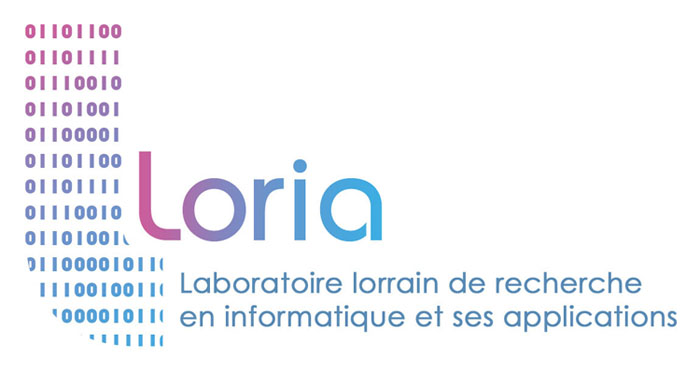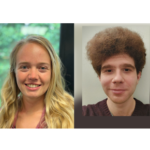
Town : Nancy (France)
Starting date : 2024-06-01 (or as soon as possible)
Duration of contract : 12 to 18 months
Deadline to apply : 2024-05-15
Contact: Slim Ouni (Slim.Ouni@loria.fr)
To apply (send your CV and a motivation letter to the contact person)
Inflammatory bowel diseases (IBD), particularly Crohn’s disease (CD), pose significant challenges to healthcare systems and patients due to their chronic and unpredictable nature (Strober et al. 2007). CD affects a substantial portion of the population in France and Europe, with considerable impacts on patients’ quality of life and healthcare resources. Within the framework of the I-DEAL project, the main goal is to address the unmet needs of CD patients by enabling early intervention and promoting a return to a normal life through innovative remote monitoring solutions. One of the objectives of the I-DEAL project is to develop a home-based system for early detection of CD flares, that enable timely intervention and improve the management of CD patients, ultimately enhancing their quality of life.
The objective of the work is to characterize pain flares through facial expressions and modifications in speech patterns using NLP and machine learning techniques. This will be achieved by analyzing video recordings of multiple patients, with each recording annotated by a physician to indicate the patient’s condition at the time of recording. The goal is to extract features from these recordings that capture the nuances of pain flares, enabling the development of classification models capable of identifying and classifying pain flare states accurately.
The missions of this work encompass several key scientific objectives. Firstly, active participation in the collection of audiovisual data from patients, with a specific focus on eliciting the pronunciation of predefined sentences. Secondly, employing advanced techniques for feature extraction, particularly linguistic features derived through sentiment analysis, while simultaneously annotating the dataset with pertinent medical information. Thirdly, the utilization deep learning methodologies, such as ResNet CNN, BLSTMs) (Tsai et al. 2017) or Time delay neural network (TDNN), to facilitate the training of classification models on the processed data (Fontaine et al. 2022, De Sario et al. 2023, Othman et al. 2021, Littlewort et al. 2007). Finally, an integral aspect involves evaluating the efficacy of the developed methodology by rigorously analyzing model performance and validating its capacity to accurately discern levels of Crohn’s Disease severity based on speech and visual modalities.
Inflammatory bowel diseases (IBD), particularly Crohn’s disease (CD), pose significant challenges to healthcare systems and patients due to their chronic and unpredictable nature (Strober et al. 2007). CD affects a substantial portion of the population in France and Europe, with considerable impacts on patients’ quality of life and healthcare resources. Within the framework of the I-DEAL project, the main goal is to address the unmet needs of CD patients by enabling early intervention and promoting a return to a normal life through innovative remote monitoring solutions. One of the objectives of the I-DEAL project is to develop a home-based system for early detection of CD flares, that enable timely intervention and improve the management of CD patients, ultimately enhancing their quality of life.
The objective of the thesis is to characterize pain flares through facial expressions and modifications in speech patterns using NLP and machine learning techniques. This will be achieved by analyzing video recordings of multiple patients, with each recording annotated by a physician to indicate the patient’s condition at the time of recording. The goal is to extract features from these recordings that capture the nuances of pain flares, enabling the development of classification models capable of identifying and classifying pain flare states accurately.
The missions of the PhD encompass several key scientific objectives. Firstly, active participation in the collection of audiovisual data from patients, with a specific focus on eliciting the pronunciation of predefined sentences. Secondly, employing advanced techniques for feature extraction, particularly linguistic features derived through sentiment analysis, while simultaneously annotating the dataset with pertinent medical information. Thirdly, the utilization deep learning methodologies, such as ResNet CNN, BLSTMs) (Tsai et al. 2017) or Time delay neural network (TDNN), to facilitate the training of classification models on the processed data (Fontaine et al. 2022, De Sario et al. 2023, Othman et al. 2021, Littlewort et al. 2007). Finally, an integral aspect involves evaluating the efficacy of the developed methodology by rigorously analyzing model performance and validating its capacity to accurately discern levels of Crohn’s Disease severity based on speech and visual modalities.
MSc degree in speech processing, NLP, computer vision, machine learning, or in a related field.
Strong programming skills in Python/Pytorch.
Prior experience with speech, text and/or video processing is an asset.
Excellent collaboration and communication skills to work effectively with interdisciplinary teams of researchers.
• Subsidized meals
• Partial reimbursement of public transport costs. Public Transportation in Nancy is free during weekends.
• Leave: 7 weeks of annual leave + 10 extra days off due to RTT (statutory reduction in working hours) + possibility of exceptional leave (sick children, moving home, etc.)
• Possibility of teleworking (after 6 months of employment) and flexible organization of working hours
• Professional equipment available (videoconferencing, loan of computer equipment, etc.)
• Social, cultural and sports events and activities
• Access to vocational training
• Social security coverage
• Nancy is 1h30 from Paris by TGV.
équipe BISCUIT, Loria
Encadrement : Hervé Frezza-Buet (HDR), Alain Dutech (HDR)
Herve.Frezza-Buet@centralesupelec.fr & Alain.Dutech@loria.fr
L’équipe BISCUIT [1] , est une équipe du laboratoire Loria [2] qui rassemble des chercheurs intéressés par de nouveaux paradigmes informatiques. Il s’agit d’une informatique où les calculs sont adaptatifs, distribués et décentralisés, réalisés par une foule d’unités de calcul simples qui communiquent principalement avec leurs proches voisins. Ces propriétés sont compatibles avec la mise en œuvre de principes d’auto-organisation non-supervisés, mais guidés, pour s’attaquer à des problèmes difficiles comme le calcul cognitif situé, la robotique autonome, l’allocation adaptative de ressources de calcul, etc.
Le cerveau est une preuve de l’efficacité et des capacités d’adaptation que l’on peut atteindre en s’appuyant sur ce genre de principes. Sa structure, relativement homogène mais déjà partiellement spécifiée dans le code génétique, va se développer, s’organiser, se spécialiser et se modulariser grâce aux interactions entre l’homme, ou plus généralement l’animal, et son monde. Cette théorie de
l’émergence de la cognition (McClelland, 2010) est séduisante, mais ses phénomènes sous-jacents sont encore mal compris. D’ailleurs, les progrès récents en matière d’apprentissage profond ne font malheureusement pas progresser la connaissance dans cette direction.
C’est dans cette optique que nous voulons explorer ce qui nous semble être une composante essentielle, et très rarement abordée, de l’émergence du comportement. Les agents artificiels que nous considérons évoluent dans des espaces sensorimoteurs continus, aussi bien au niveau temporel que spatial. À l’inverse, les processus cognitifs les plus élémentaires s’appuient des moments où
sont prises des décisions. Dans le décours continu du temps, ces moments sont des points où une reconnaissance émerge des signaux perçus, où une action est déclenchée. L’agent, selon ce principe, est cognitif dans la mesure où il interagit avec son environnement par scansion, en construisant les événements nécessaires à son couplage avec le monde extérieur. Palper du regard une scène,
pour reprendre l’expression de Merleau-Ponty, y détecter un objet particulier, décider de le saisir, sont autant de production d’événements où perception et action se confondent. Se pose alors la question de savoir comment se crée ce concept d’événement, comment le monde passe d’un continuum en perpétuelle évolution à une suite d’événements discrets qui s’enchaı̂nent. Comment se construit un rapport au monde compatible avec le raisonnement ? Comment passe-t-on d’un
agent purement réactif à un agent qui prend une décision ?
L’équipe BISCUIT s’attache à « faire réellement quelque chose avec des populations de calcul spatialisées et Décentralisées (SDP) [3] », plutôt que de modéliser avec précision les structures du cerveau. Le sujet de thèse de doctorat proposé est un pas de plus dans cette direction.
[1]. Bio-Inspired Situated Cellular and Unconventional Information Technology, http://biscuit.loria.fr/
[2]. www.loria.fr
[3]. Spatialized and Decentralized Population

Découvrez le Creativ’Lab, lancé à l’initiative du LORIA (Laboratoire Lorrain de Recherche en Informatique et ses Applications), une plateforme dédiée aux recherches expérimentales dans les domaines de la robotique, et les systèmes cyber-physiques ! Rencontre avec Adrien Guénard, responsable technique de la plateforme Creativ’Lab membre de la fédération des espaces d’innovation dans le cadre du projet Sirius.

La dernière édition du prestigieux prix de thèse en informatique Gilles Kahn a connu deux accessits.
